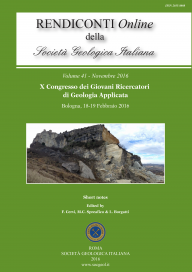
Relationships between earthquake-induced landslide magnitude, ground motion, and distance from the seismic source
Andrea Valagussa (a) & Paolo Frattini (a)
(a) Department of Earth and Environmental Sciences, University of Milano-Bicocca, Piazza della Scienza, 4, 20126, Milano, Italy. E-mail: a.valagussa2@campus.unimib.it
Volume: 41/2016
Pages: 350-353
Abstract
The characterization of landslide magnitude is essential for landslide hazard assessment. The magnitude of landslide controls its destructive power and it is related to the frequency of occurrence, with larger landslides being less frequent than smaller ones. We analyse five earthquake-induced landslide inventories (Papua New Guinea, 1993; Northridge, 1994; Niigata-Chuetsu 2004; Iwate-Miyagi Nairiku, 2008; Wenchuan, 2008). For each inventory, we analyse the landslide size distribution as a function of peak ground acceleration. Then we consider the dependence of the ground motion on the distance from the seismic source. Eventually, we analyse the size distribution of landslides as a function of the distance from the seismic source. We observed a clear relationship between the landslide size, the peak ground acceleration, and distance from the fault trace. We observed a range of the scaling parameter between 1.6 and 3.7.
Keywords
Get Full Text